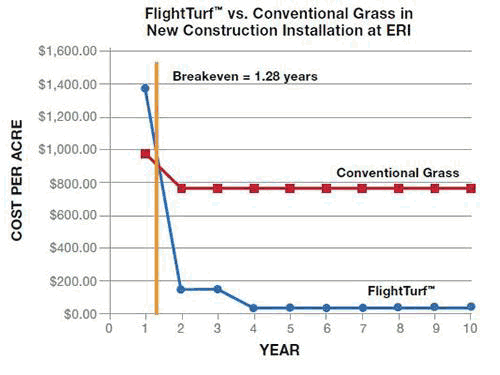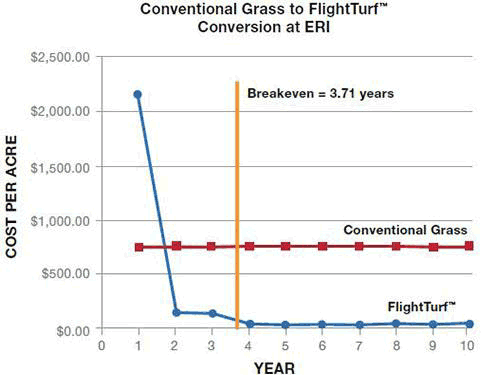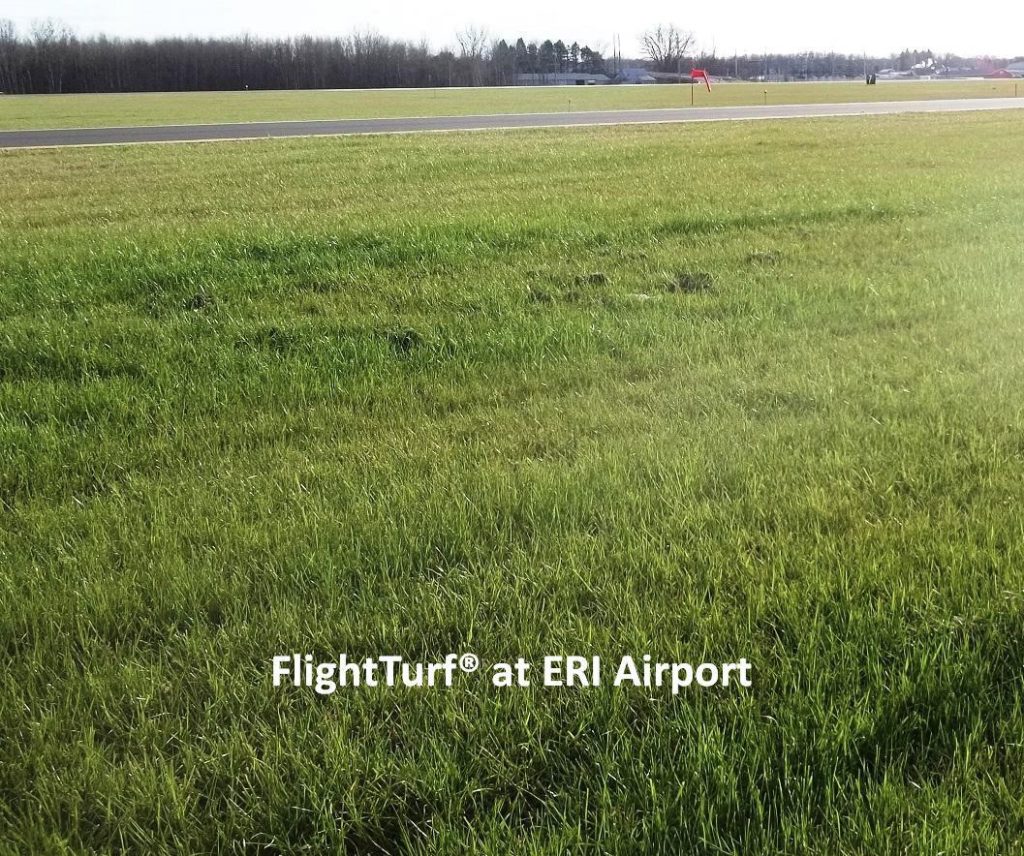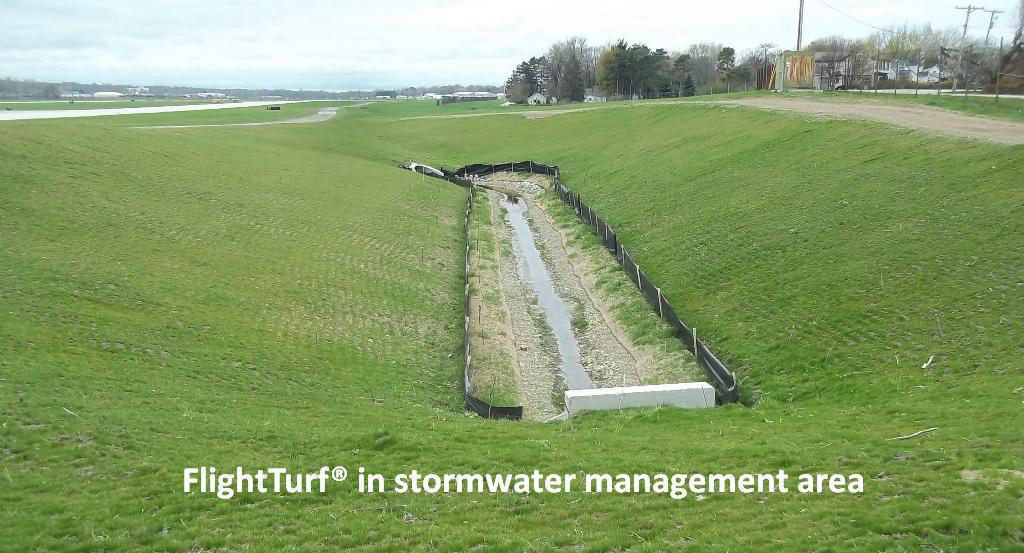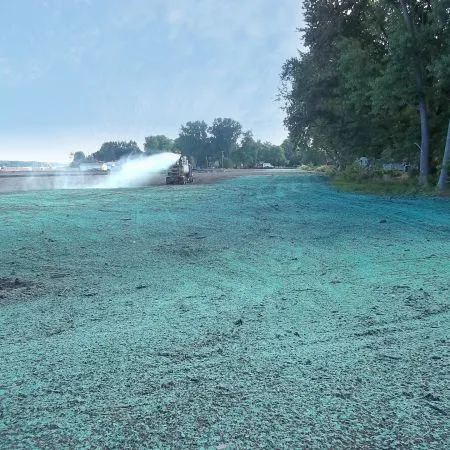Case Study
Erie International Airport, PA (ERI)
Increasing Airport Safety And Efficiency
Study Site
Erie International Airport (ERI) – Erie, PA
Study Goals
To decrease turfgrass maintenance costs and reduce the number of bird strikes on the airfield.
Study Summary
In the summer of 2011, ERI installed 95 acres of FlightTurf® as part of a 1,920-foot runway extension project. FlightTurf® reduces the need for mowing to just once a year to maintain a height of 7”, and deters wildlife from areas they are unwanted. After hearing a presentation on the reduced mowing and wildlife-deterring characteristics of FlightTurf®, Chris Rodgers, ERI Airport Manager, envisioned it as the answer to ERI’s wildlife problem. Explaining that the airport is located along a migratory route for Canada Geese, Rodgers stated, “We have an exceptionally high amount of migratory bird activity in the spring and fall.” According to Rodgers, “This new grass [FlightTurf®] became a significant part of the plan on the ground to discourage wildlife.”
Personnel at ERI also face problems with runway closures when mowing, and desired the new runway extension area to be maintenance-free. “We need tower clearance to mow in the Runway Safety Area; it is really a frustration,” noted Rodgers. ERI mows its 300 acres of airside grass approximately 20 times between March and November. Rodgers concurs with a 2010 study by Urban Engineers, prepared for the Philadelphia Division of Aviation, which states that airports, on average, spend $836 per acre, per year on mowing (2010 dollars). He says that ERI spends a similar amount. This number does not include the cost of runway closures, which would yield an even greater economic benefit as result of decreased mowing.
Importantly, the Federal Aviation Administration accepts the use of FlightTurf® on airfields, as provided in a written statement from Brian Rushforth, Manager of the FAA National Airport Safety and Operations Office, to Native Return®.
“[FlightTurf®] was just so intuitive that we knew we had to find a way to use it!”
Chris Rodgers, ERI Airport Manager
Study Conclusions
The initial 95 acre runway extension project concluded successfully. Erie Airport Manager Chris Rodgers opted to install another 75 acres of FlightTurf® in April 2013.
Increased Safety: FlightTurf® grass, together with proper turf management, resulted in increased airport safety.
Less mowing means less runway incursion.
FlightTurf® is a less attractive food source to wildlife; therefore, birds traveling along migratory routes are discouraged from feeding on airfields, and tend to flock elsewhere. Endophytic activity is one of the wildlife deterring mechanisms at work in FlightTurf®.
The process of mowing stirs up insects, which attracts the birds that prey upon them. By near-elimination of mowing, birds are less attracted to airfields, and the risk of bird strikes is reduced. Additionally, by reducing the diversity of plants, a FlightTurf® mono-stand of grass effectively eliminates a food source for wildlife.
Reduced mowing eliminates the production of straw from grass clippings, which attracts birds as nesting material. Straw clogs jet engines and must be removed from runways.
Reduced Maintenance: FlightTurf®’s minimal need for mowing reduces maintenance costs by approximately $800 per acre per year. The $90,000 initial investment in the project will be recovered in just 14 months. Assuming labor is re-allocated, the annual savings in maintenance will amount to a return on investment approaching 85% each year.
Converting existing vegetation to FlightTurf® will yield a 30% or higher annual return on investment (from maintenance savings), with the premium conservatively recouped in 3.71 years. In practice, breakeven of the conversion cost is projected to be closer to 3 years.
